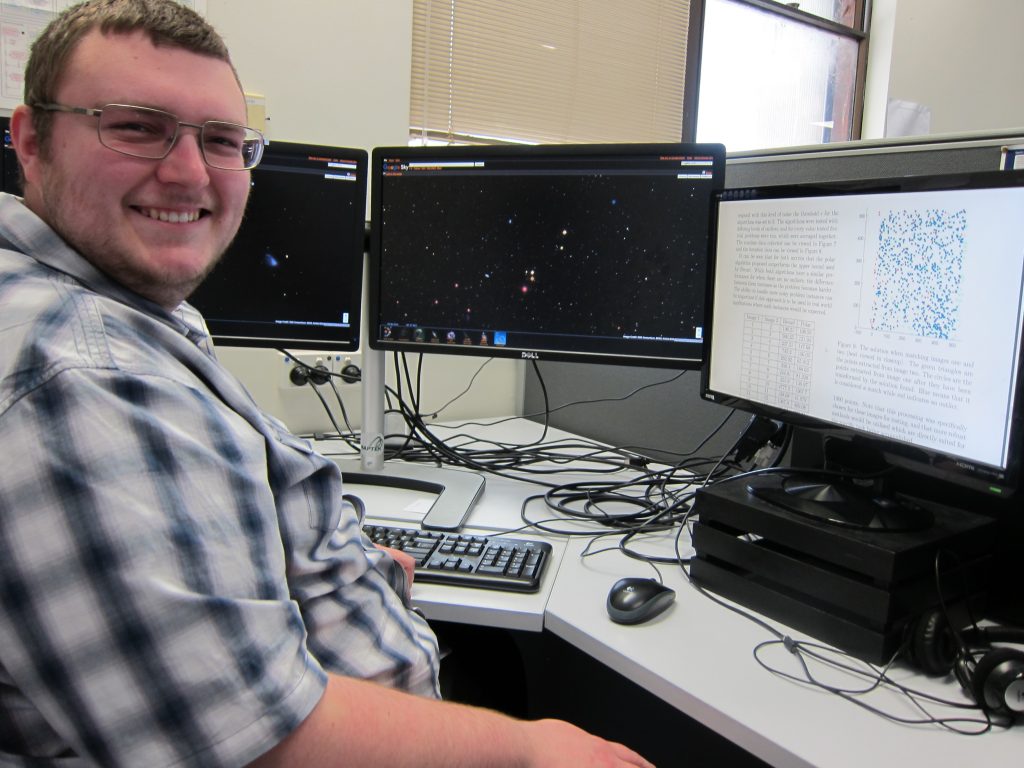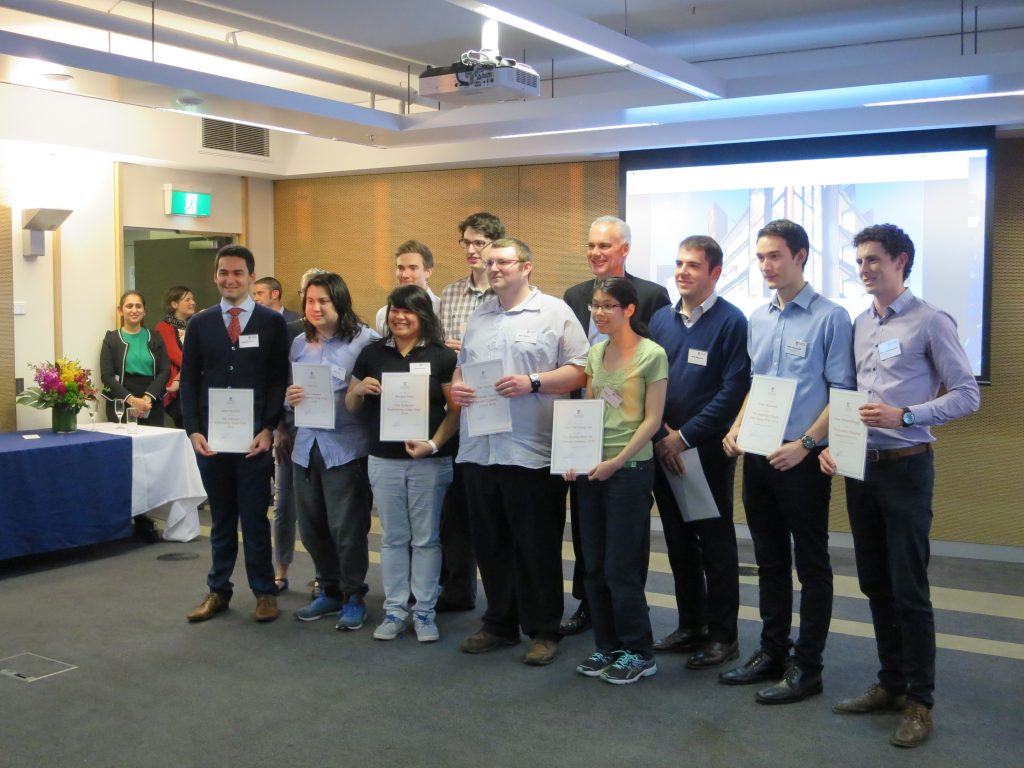Wednesday, June 7th, 2017
Maptek software engineer Ryan Marker has been looking to the stars to help detect and track new near-earth objects.
Ryan was recently recognised with the Google Prize for Honours in Computer Science at an University of Adelaide awards night for his study.
His research, co-authored by Tat-Jun Chin and Garry Newsam, involved developing a new algorithm for aligning star field images which enables the positioning of near-earth objects to be determined.

Ryan Marker has been developing a new algorithm for aligning star field images
The findings are also applicable to satellite control systems for motion estimation.
‘Keeping track of the position and motion of a satellite is an important task which is required to ensure that missions are carried out in an effective manner,’ Ryan says.
‘A sequence of images is recorded using a single camera as the satellite traverses its orbit.
‘To characterise the rigid motion of the satellite, the image transformations between successive frames must be estimated and the images must be registered such that the corresponding regions are aligned.
‘The main challenge is the paucity of visually distinct features in star field images.’
The research specifically looked at the bounding function of an optimal branch and bound algorithm and laid the foundation for the technique to be practically applied.

University of Adelaide School of Computer Science 2017 award winners
‘The technique investigated showed that the bounding function developed can improve the performance of branch and bound algorithms applied to this class of problem,’ Ryan says.
The research, Efficient Geometric Matching with Polar Bounds for Aligning Star Field Images, was published by the Australian Robotics and Automation Association, as a paper for the 2016 Australasian Conference on Robotics and Automation.
In 2015 Ryan won the Maptek Prize in Computer Science in that year’s university awards. This led to an internship with Maptek and then a full-time position in February this year.
‘Thinking like this – the application of registration, feature detection and photogrammetry – is directly relevant to our work at Maptek,’ he says.
‘Algorithm design and improvements for spatial mapping and transformation are integral to Maptek technology.’